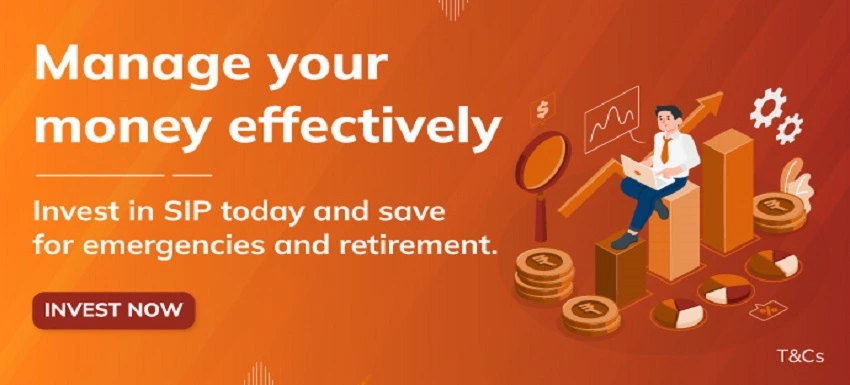THE
ORANGE
HUB
What Is The Best Time to Invest in Debt Funds?

Debt Funds have gained popularity among Indian investors as a stable and reliable investment option. These Mutual Fund schemes primarily invest in various debt instruments such as corporate bonds, government securities, treasury bills, debentures and commercial papers. One of the key reasons investors are drawn to Debt Funds is the stability of returns they offer, especially during unstable times in the equity market. However, is there an ideal time to invest in Debt Funds and can you effectively time your investments for optimal returns? Let us explore how to invest in Debt Funds.
What are Debt Funds?
Debt Funds are investments offered by Mutual Fund companies that primarily invest in fixed-income instruments such as government and corporate bonds, debentures, treasury bills and other debt securities. These funds aim to generate returns for investors through periodic interest payments and potential capital appreciation. Unlike Equity Funds, Debt Funds are considered low risk and are ideal for conservative investors seeking stable returns. They offer liquidity, ease of investment and diversification across various debt instruments. However, Debt Funds are subject to interest rates and credit risk. Prevailing market conditions and economic factors can influence their returns.
What is CAGR?
CAGR or Compound Annual Growth Rate is a measure of the annualised growth of an investment over a specific period. It tells you how much your investment has grown on an average annual basis. CAGR smoothens the bumps and fluctuations in investment returns, providing a clear picture of how your money has grown over time.
CAGR is expressed as a percentage and is a crucial metric for assessing the performance of Mutual Funds. It helps you compare different investment options and make informed decisions about where to put your money.
Debt Funds vs Fixed Deposits
Debt Funds and Fixed Deposits (FDs) are two investment options often considered by conservative investors aiming to shield their capital from the stock market's volatility. This comparison will help you weigh the pros and cons of each investment avenue and make an informed decision.
Ease of investment
Both Debt Funds and FDs offer straightforward investment processes. You can invest a lumpsum or opt for a Systematic Investment Plan (SIP) in Debt Funds with a choice of 16 categories to match your needs. On the other hand, FDs require a branch visit or can be initiated through Net Banking. The FD certificate, specifying the principal, interest rate, maturity date and amount, is usually provided on the same day.
Liquidity
Debt Funds and FDs are relatively liquid but there are distinctions. Redeeming Debt Funds typically results in funds being credited to your account within one working day. Premature withdrawal of an FD, however, incurs a penalty. Tax-saving FDs come with a mandatory 5-year lock-in period.
Risks and returns
FDs provide fixed returns as indicated in the certificate, irrespective of rate changes during the investment tenure. In contrast, Debt Funds are subject to market and credit risks, meaning returns are not fixed and can fluctuate.
Taxation
Interest from Fixed Deposits (FDs) is added to your income and taxed based on the applicable income tax slabs. However, the taxation of Debt Funds depends on the holding period. If you hold the funds for over 3 years, any gains are considered as long-term capital gains and are taxed at 20% with indexation benefits. This means that the acquisition cost is adjusted for inflation. On the other hand, if you sell your Debt Funds before 3 years, any gains are considered short-term and are taxed as per the standard income tax slabs.
Understanding the best time to invest in Debt Funds
Debt Mutual Funds cover a wide range of debt securities and each security is affected by the changes in interest rates. As a result, the best time to invest in Debt Funds is usually when interest rates are decreasing or expected to drop.
When interest rates decrease, bond prices tend to rise. Consequently, Net Asset Value (NAV) of Debt Funds also increases. This rise in NAV benefits Debt Fund investors as it results in higher investment returns.
The challenge of timing interest rates
While investing in Debt Funds during rate-cut cycles may seem like an ideal strategy, predicting the economic interest rate movements accurately is challenging. It is similar to forecasting the stock market's direction as multiple domestic and international factors influence interest rates. Assessing the impact of each of these factors can be complex and uncertain.
Therefore, attempting to time your investments in Debt Funds based solely on interest rate predictions is not advisable. Instead, a wiser approach is to align your investment goals with an appropriate Debt Fund category.
Strategies for selecting suitable Debt Fund categories
The key to successful Debt Fund investing lies in choosing the right category based on your investment objectives and time horizon. Here, we will guide you in selecting the most suitable Debt Fund category based on various investment horizons:
Few days
If you intend to invest for a short period, consider Overnight Funds. These funds are well suited for investments with a horizon of just a few days.
Few months/ Emergency fund: Liquid funds are an excellent choice for short-term goals or building an emergency fund. These funds are designed for investments with a horizon of a few months.
Up to a year
Ultra Short Duration Funds are ideal for investments of up to a year. They offer a balance between liquidity and returns.
One to three years
If your investment horizon ranges from one to three years, consider Money Market Funds, Low Duration Funds or Short Duration Funds. These categories provide the potential for slightly higher returns within this time frame.
Over three years
Corporate Bond Funds and Banking & PSU Funds are suitable options for longer-term investments that extend beyond three years. These funds offer the potential for higher returns over an extended period.
Uncertain investment period
If your investment period is uncertain or flexible, Liquid Funds, Ultra Short Duration Funds and Money Market Funds are suitable choices due to their liquidity and stability.
When investing in Debt Funds, there is no best time to invest that guarantees optimal returns. Instead, the key to successful debt fund investing lies in aligning your investments with your financial goals and time horizon. Remember that the primary objective of investing in Debt Funds is to earn relatively stable returns and benefit from effective asset allocation.
Investing in Debt Funds can be smart if your chosen category matches your financial goals. It is important to avoid acting on interest rate movements because these strategies can be unpredictable and carry a high risk. Instead, focus on selecting Debt Funds that are suitable for your needs and can help you achieve your financial objectives with confidence.
Conclusion
Debt Funds can be a wise choice if you want to diversify your investment portfolio. Not only do they offer stability but they also have the potential for returns. To make the most out of debt fund investments, it is important to understand how interest rates affect the performance of these funds and to choose the right fund category. By staying focused on your objectives, you can unlock the full potential of Debt Funds and make them a valuable investment.
Scroll to top











